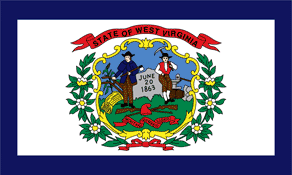West Virginia State Standards for Language Arts: Grade 7

Currently Perma-Bound only has suggested titles for grades K-8 in the Science and Social Studies areas. We are working on expanding this.
WV.RLA.S.7.1. Reading: Students will use skills to read for literacy experiences, read to inform and read to perform a task by identifying and using the dimensions of reading (phonemic awareness, phonics, background knowledge/vocabulary, high frequency words/fluency, comprehension, writing and motivation to read) and employing a wide variety of literature in developing independent readers.
RLA.O.7.1.1. Compare/contrast connotation and denotation to understand and enhance meaning of words, sentences and uncomplicated passages.
RLA.O.7.1.2. Use Greek and Latin roots, prefixes and suffixes to determine the meaning of words, understand words, change word meanings and generate new words appropriate to grade level, recognize that knowledge of the origins and history of word meanings enhances understanding of a word's meaning.
RLA.O.7.1.3. Classify the defining characteristics, build background knowledge and apply reading skills to understand a variety of literary passages and genres by West Virginia, national and international authors:
RLA.O.7.1.3.a. Fiction
RLA.O.7.1.3.b. Nonfiction
RLA.O.7.1.3.c. Myths, poems
RLA.O.7.1.3.d. Fantasies
RLA.O.7.1.3.e. Biographies
RLA.O.7.1.3.f. Autobiographies
RLA.O.7.1.3.g. Science fiction, tall tale
RLA.O.7.1.3.h. Supernatural tales
RLA.O.7.1.4. Use pre-reading strategies (e.g., generating questions, previewing, activating and evaluation prior knowledge, scanning, skimming) and comprehension strategies to critically analyze and evaluate the composition of text by:
RLA.O.7.1.4.a. Generalizing to establish a purpose for reading
RLA.O.7.1.4.b. Interpreting the relationship between graphic aids and text
RLA.O.7.1.4.c. Making complex or abstract predictions by synthesizing information gained from previewing text and graphic aids
RLA.O.7.1.5. Determine and interpret the elements of literature to construct meaning and recognize author's and/or reader's purpose:
RLA.O.7.1.5.a. Plot
RLA.O.7.1.5.b. Character
RLA.O.7.1.5.c. Setting
RLA.O.7.1.5.d. Conflict
RLA.O.7.1.5.e. Rising and falling action
RLA.O.7.1.5.f. Climax
RLA.O.7.1.5.g. Resolution
RLA.O.7.1.5.h. Point of view
RLA.O.7.1.5.i. Antagonist
RLA.O.7.1.5.j. Protagonist
RLA.O.7.1.5.k. Hero
RLA.O.7.1.6. Relate and analyze connections/themes among ideas in literary and informational texts, such as text to self, text-to-text, text to world connections, and recognize that global awareness promotes understanding, tolerance, and acceptance of ethnic, cultural, religious and personal differences.
RLA.O.7.1.7. Summarize explicit and implied information from literary and informational texts to recognize the relationships among the facts, ideas, events and concepts (e.g., names, dates, events, organizational patterns, graphical representations as found in photographs, captions, maps, tables or timelines, textual features including table of contents, headings or side bars).
RLA.O.7.1.8. Examine and interpret figurative language (hyperbole, simile, metaphor) and literary techniques (e.g., flashback, stereotype, foreshadowing) in text.
RLA.O.7.1.9. Read, compare and interpret types of poetry (e.g., narrative poems, ballads, lyric, epic), and recognize the elements to derive meaning of poetry.
RLA.O.7.1.10. Use examples, and details in practical texts to make inferences and logical predictions about outcomes of procedures in such texts.
RLA.O.7.1.11. Critique the usefulness of the form, and content of practical texts.
RLA.O.7.1.12. Increase amount of independent reading and use appropriate graphic organizers (e.g., diagrams, flow charts, story maps, outlines, concept maps, tables, reading guides) to analyze more complex ideas in both fiction and non-fiction.
WV.RLA.S.7.2. Writing: Students will apply writing skills and strategies to communicate effectively for different purposes by using the writing process, applying grammatical and mechanical properties in writing and selecting and evaluating information for research purposes.
RLA.O.7.2.1. Use note-taking strategies including paraphrasing and summarizing to develop a written composition.
RLA.O.7.2.2. Using student-prepared notes, create an outline and use it to develop a written and/or oral presentation using computer-generated graphics (e.g., tables, charts, graphs).
RLA.O.7.2.3. Use analogies, illustrations, examples, or anecdotes to enhance oral and written communication (e.g., letters, poems, brief reports, descriptions, extended text, illustrations).
RLA.O.7.2.4. Use the five-step writing process (pre-writing, drafting, revising, editing, publishing) to generate topics, plan approaches, and develop expository and persuasive writing tasks:
RLA.O.7.2.4.a. Compositions
RLA.O.7.2.4.b. Brochures
RLA.O.7.2.4.c. Display ads
RLA.O.7.2.4.d. Commercials
RLA.O.7.2.4.e. Speeches
RLA.O.7.2.4.f. Poetry
RLA.O.7.2.5. From a prompt use the five-step writing process to develop a focused composition that contains specific, relevant details and vivid and precise words.
RLA.O.7.2.6. Use sophisticated transitional words and cues to signal organization of a composition.
RLA.O.7.2.7. Identify and use a variety of sources for different types of information (e.g., Internet research, databases for periodical and newspaper articles, newspapers, schedules, advertisements).
RLA.O.7.2.8. Understand how to summarize and use direct quotations in writing, recognize copyright laws/issues, ethical acquisition and use of digital information in citing sources for research/report.
RLA.O.7.2.9. Document sources of information using a provided bibliographic format.
RLA.O.7.2.10. Select and use a variety of resource materials to plan, develop, and deliver a research project (3 pages) with documented sources, using computer-generated graphic aids.
WV.RLA.S.7.3. Listening, Speaking and Media Literacy: Students will apply listening, speaking and media literacy skills and strategies to communicate with a variety of audiences and for different purposes.
RLA.O.7.3.1. Demonstrate effective oral communication skills (e.g., tone, volume, rate, audience, etiquette, standard English) through presentation of
RLA.O.7.3.1.a. Compositions
RLA.O.7.3.1.b. Reports
RLA.O.7.3.1.c. Scripts
RLA.O.7.3.1.d. Dramatizations
RLA.O.7.3.2. Use oral/visual information to research, explore, question and imagine a topic.
RLA.O.7.3.3. Distinguish between private and public information in research and reporting.
RLA.O.7.3.4. Listen and observe in order to comprehend and express a point-of-view concerning the topic, purpose and medium (e.g., of a guest speaker, informational video, televised interview, radio news program).
RLA.O.7.3.5. Evaluate information to reach consensus in group discussions or settings.
RLA.O.7.3.6. Plan, create and present an age-appropriate media product that demonstrates format, purpose, and audience.